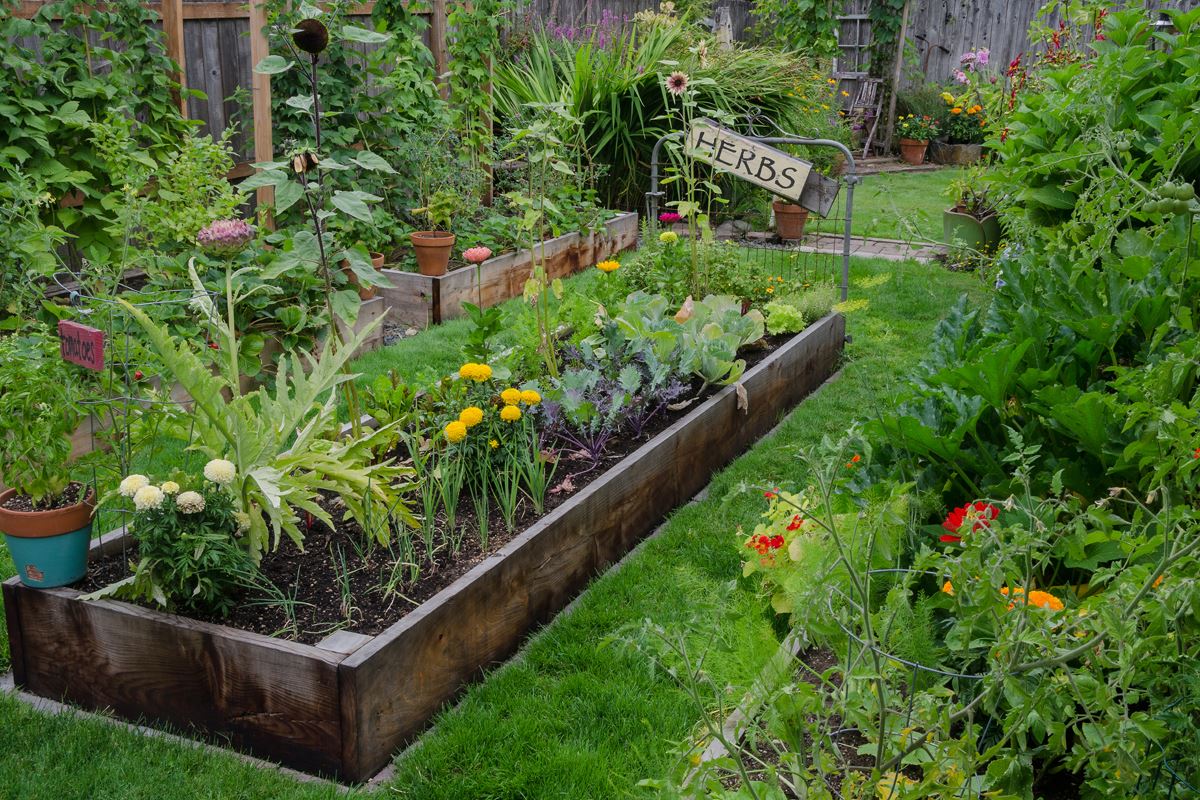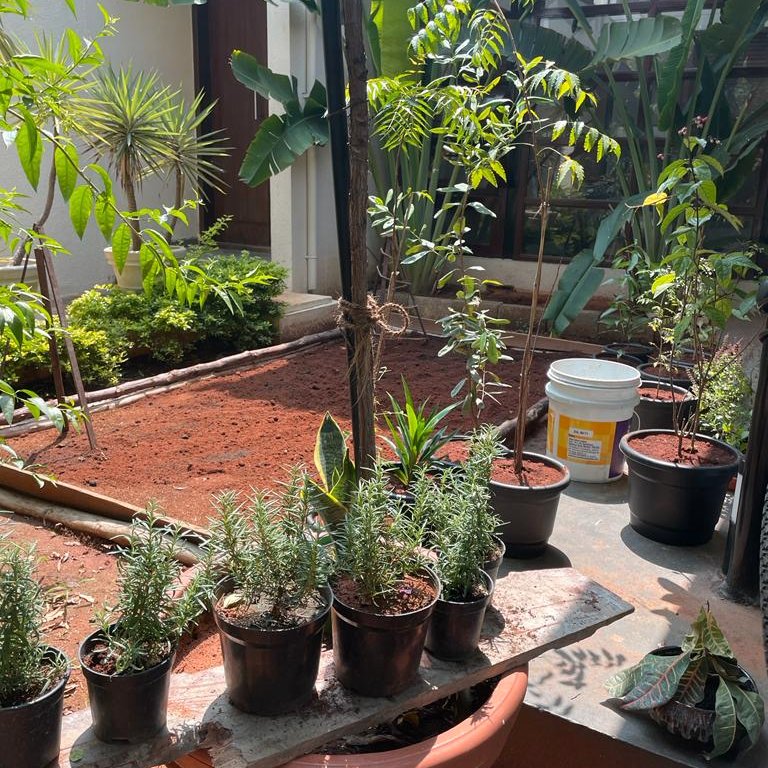
Are you a gardening enthusiast with a penchant for cultivating herbs and tomatoes? If so, you may have found yourself wondering, “Can you use tomato feed on herbs?” It’s a valid question, as both tomatoes and herbs have their unique nutrient requirements.
We will explore herb cultivation and show you the use of tomato feed on these aromatic and flavorful plants. From understanding the nutritional needs of herbs to practical tips for maintaining a thriving herb garden, we’ve got you covered. So, let’s embark on this green journey and uncover the secrets of nurturing your herbs with the right fertilizer.
Table of Contents
Can You Use Tomato Feed on Herbs?

The answer is yes, but with caution. While tomato feed is not the ideal choice for nourishing herbs, it can be used with some modifications. Here are some guidelines:
- Dilution: Tomato feed is potent and should be diluted by at least half with water when using it on herbs. This will ensure that the herbs receive essential nutrients without overwhelming them.
- Frequency: Apply the diluted tomato feed sparingly, usually once a month during the growing season. Herbs do not require frequent feeding like tomatoes.
- Monitor Growth: Keep a close eye on your herbs. If you notice excessive leafy growth at the expense of flavor and aroma, reduce the frequency of tomato feed application.
- Balanced Fertilization: For optimal herb health, consider using a balanced, all-purpose fertilizer with an N-P-K ratio suitable for herbs. This will provide them with the nutrients they need without the risk of over-fertilization.
Understanding Tomato Feed
Tomatoes, on the other hand, are notorious for their insatiable appetite for nutrients. Tomato feed is designed to meet their specific needs, which differ from those of herbs. Here’s what tomato feed typically contains:
- High Potassium Content: Tomato feed is rich in potassium, which supports fruit production and overall plant vigor. It promotes the development of plump, juicy tomatoes.
- Moderate Nitrogen: While tomatoes require nitrogen, they don’t need as much as herbs. Excessive nitrogen can lead to lush foliage at the expense of fruit production.
- Low Phosphorus: Tomato feed usually contains less phosphorus, as tomatoes don’t depend heavily on root development.
The Nutritional Needs of Herbs
Herbs, the delightful additions to your culinary and medicinal repertoire, have specific nutritional needs. Understanding these requirements is crucial to their successful growth. Here’s what you need to know:
- Balanced Nutrient Composition: Herbs typically thrive with a balanced diet. They require a mix of essential nutrients such as nitrogen (N), phosphorus (P), and potassium (K), commonly represented as N-P-K on fertilizer labels.
- Nitrogen: Nitrogen is essential for healthy leafy growth in herbs. It encourages lush foliage and vibrant green colors.
- Phosphorus: Phosphorus plays a pivotal role in root development and flowering, aiding herbs in producing seeds and fruit.
- Potassium: Potassium is responsible for overall plant health, helping herbs withstand stress, diseases, and harsh environmental conditions.
- Micronutrients: Herbs also benefit from trace minerals like magnesium, calcium, and sulfur for robust growth.
Herb-Specific Fertilizer Options
While you can use tomato feed on herbs with caution, there are herb-specific fertilizers available that cater to their unique needs. Here are a few options to consider:
- Organic Herb Fertilizer: Organic fertilizers are gentle on herbs and provide a slow release of nutrients. Look for a balanced N-P-K ratio tailored for herbs.
- Liquid Herb Fertilizer: Liquid herb fertilizers are easy to apply and are readily absorbed by the plants. They often contain a range of micronutrients.
- Granular Herb Fertilizer: Granular herb fertilizers release nutrients gradually, promoting sustained growth over an extended period.
The Careful Balance
Balancing the needs of herbs and tomatoes in your garden requires some finesse. Here are some key takeaways to ensure harmony in your green space:
- Separate Feeding Schedules: Since tomatoes and herbs have different feeding requirements, consider feeding them separately. Tomato feed can be used for your tomatoes, while an herb-specific fertilizer caters to your herb garden.
- Regular Monitoring: Keep an eye on your plants for signs of over-fertilization or nutrient deficiencies. Adjust your feeding schedule as needed.
- Experiment and Learn: Gardening is a dynamic process. Feel free to experiment with different fertilizers and feeding schedules to find what works best for your unique garden.
The Art of Herb Gardening
Now that we’ve answered the “can you use tomato feed on herbs” question, let’s explore the art of herb gardening. Here are some essential tips to ensure your herb garden thrives:
- Choose the Right Location: Herbs love sunshine. Select a sunny spot with well-draining soil to accommodate your herb garden. A south-facing garden bed or windowsill is ideal.
- Select Your Herbs Wisely: Different herbs have varying requirements. Consider planting herbs with similar needs together to make care more manageable.
- Watering: Herbs generally prefer consistent moisture levels. Water them when the top inch of soil is dry, but avoid overwatering, which can lead to root rot.
- Pruning and Harvesting: Regular pruning not only encourages bushy growth but also ensures that your herbs remain flavorful. Harvest herbs when they are at their peak to enjoy the best taste and aroma.
- Companion Planting: Plant herbs near vegetables or other herbs that they complement. For instance, basil and tomatoes make great neighbors in the garden.
Conclusion
In the quest to answer the question if you can use tomato feed on herbs, we’ve uncovered the nuances of herb nutrition and the distinct characteristics of tomato feed. While using tomato feed on herbs is possible with careful dilution and monitoring, it’s not the most ideal option. Consider using herb-specific fertilizers to provide your herbs with the nutrients they need for robust growth, flavor, and aroma.
To create a thriving herb garden, select the right location, choose your herbs wisely, and pay attention to their specific care requirements. With a little green thumb finesse, you can enjoy a bountiful harvest of aromatic herbs that elevate your culinary creations.
